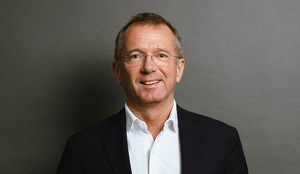Quicker green hydrogen permitting – planned changes in German licensing requirements for electrolysers
Generating hydrogen is a demanding chemical process. Not surprisingly, building and operating a hydrogen plant requires a rather sophisticated environmental permit. This in turn means that hydrogen plant licensing takes time. A German and EU project tries to make this easier.
Below, after some background information, we first briefly review the current requirements for the granting of permits for onshore hydrogen production. We then look into the planned changes for the electrolyser permitting, in particular a German draft bill to facilitate permitting and the EU project to amend the Industrial Emissions Directive.
1. Background
Under German Law, the operation of an electrolysis installations is subject to approval. To streamline the licensing process of electrolysers, the Bundesministerium für Umwelt, Naturschutz, nukleare Sicherheit und Verbraucherschutz (Federal Ministry for the Environment, Nature Conservation, Nuclear Safety and Consumer Protection, “BMUNV”) is revising the 4. Verordnung über genehmigungspflichtige Anlagen (Ordinance on Installations which Require a Permit, “4. BImSchV”), which complements the Bundes-Immissionsschutzgesetz (Federal Immission Control Law, “BImSchG”).
The draft (German only) was published end of November. It purposes to anticipate amendments of the Industrial Emissions Directive (Directive 2010/75/EU of the European Parliament and of the Council of 24 November 2010 on industrial emissions [integrated pollution prevention and control], OJ L 334, 17.12.2010, p. 17, “IED”) and to start transposing said directive into German Law ahead of its actual adoption.
Just as keen on quick action in the matter is the German Bundesrat (Federal Council). On the national level the Bundesrat called on the German government to push for facilitation of the permit requirements in the EU trilogue negotiations on the revision of the IED (BR-Drs. 591/23). On the supranational level the Bundesrat submitted comments in writing to the Commission (BR-Drs. 176/22).
The political ambitions trace back to the recently updated national hydrogen strategy. In line with the strategy the capacity of electrolyser in Germany is to be ramped up to at least 10 GW until 2030. Accelerating the permitting process is of key importance.
2. Current permitting requirements
2.1 Permitting requirements in BImSchG
According to current German Imission Control law, industrial-scale electrolysers require a permit. Electrolysers fall under No. 4.1.12 appendix 1 of the 4. BImSchV, i.e.
installations for the production on an industrial scale of substances or groups of substances by chemical, biochemical or biological conversion […] which produce gases such as […], hydrogen.
The qualifying term “industrial-scale” is not defined in the BImSchG. It is interpreted to include any installation used for commercial purposes, even if small-scale.
Such installations, according to Sec. 5 (1) BImSchG,
must be built and operated in such a way that, in order to ensure a high level of protection of the environment as a whole,
- harmful environmental impacts and other dangers, significant disadvantages or significant nuisances for the general public or the neighbourhood may not be caused;
- precautions are provided against harmful environmental impacts and other dangers, significant disadvantages and significant nuisances, in particular by means of state-of-the-art technology (Stand der Technik);
- waste is avoided, waste that cannot be avoided is recovered and waste that cannot be recovered is disposed of without detriment to the common good; […];
- the use of energy is sparing and efficient.
An electrolyser must be granted a permit if it has been verified that all the conditions set forth in the relevant ordinances are fulfilled and if the construction and operation of the electrolyser are not precluded by other public law regulations or occupational health and safety concerns (see Sec 6 (1) BImSchG). Depending on the construction specifications of the installation, the permitting authority is compelled to assess the electrolyser against a number of different legal requirements under i.a. construction law or the industrial safety ordinance.
In addition, it must examine the need for an environmental impact assessment (see Sec. 7 (1) of the Umweltverträglichkeitsprüfungsgesetz [Environmental Impact Assessment Act, “UVPG”] in connection with No. 4.1.2 of the appendix 1 to the UVPG). The examination may find a full environmental impact assessment necessary. Generally, this would entail the need for a potentially protracted, time-consuming assessment by an environmental expert.
If a full or preliminary environmental impact assessment was to be carried out, the authority must consider it in its decision on the permit application under BImSchG.
The permit procedure under BImSchG prescribes public participation. Therefore, the authority publishes the application documentation. The interested public is provided the opportunity to comment on the project.
Industrial-scale electrolysers, as defined in the BImSchV, also fall into the scope of the Industrial Emissions Directive. Thus the obligations as regards the mandatory use of best available techniques (see Art. 11 IED) and reporting apply.
2.2 Optional: Planning approval procedure
An alternative option to the above-described permit exists for Power-to-X installations. They fall under the term of Energiekopplungsanlagen (energy coupling systems) in Sec. 43 (2) no. 7 of the Energiewirtschaftsgesetz (Energy Industries Act, “EnWG”). The Vorhabenträger (project sponsor) may alternatively apply for a Planfeststellungsbeschluss (planning approval, “PFB”). Although entailing a lengthier procedure, the PFB allows for either the vorzeitige Besitzeinweisung, i.e. the premature transfer of land possession rights, under Sec. 44 b EnWG or for expropriation under Sec. 45 EnWG. The project sponsor must submit the respective application. The material requirements for the installation stay the same, however. The planning approval procedure also includes public participation.
3. Draft proposal
On the European level the European Commission already in 2022 proposed a revision of the Industrial Emissions Directive (COM/2022/156 final/3). However, the proposal did not exclude electrolysers from the scope of the directive. This had been suggested by interested parties and was picked up by both the European parliament and the Council in their respective legislative documents, albeit with certain caveats.
The report of the European Parliament excluded electrolysers from the scope of the IED only if their production capacity was below 50MW electricity input (Annex I, point 4(2) lit. a). With respect to the same provision, in their general approach the Council explicitly excluded electrolysers, without limitations. However, in a provision further on in the Annex I, under point 6(6), the Council sought to reintroduce electrolysers with a production capacity that exceeds 60 t per day into the scope of the IED. It is still unsure which option will be agreed on.
Trilogue negotiations between the European Parliament, the Council and the Commission reached a provisional political agreement on November 29th, after a lengthy third informal trilogue on November 28th. The negotiation documents from the trilogue on October 10th showed that, at least on the technical level, the three institutions agree on generally excluding electrolysers from the scope of the IED. A corresponding, yet to be discussed recital featured in the Parliament’s position. The documents also showed that the limitation introduced by the Parliament in Annex I, point 4(2) lit. a was ruled out, while the Council’s mandate under Annex I, point 6(6) was marked as controversial. The BMUNV draft provides for excluding production of hydrogen via electrolysis from no. 4.1.12 appendix 1 4. BImSchV and opts for introducing a new regime for electrolysers. Electrolysers up to 5 MW shall be exempt from any permitting requirement under BImSchG. Installations with a rated electrical output of 68 MW or more, provided that the production capacity exceeds 50 tonnes of hydrogen per day, shall require a permit under BImSchG. This includes the requirement of public participation. Also, such an installation is considered an installation in the meaning of the IED.
Installations of 5 MW or more rated electrical output which do not fall in the category requiring a permit require a permit under BImSchG as well according to the draft. However, a simplified procedure applies.
With this permitting cascade the German government tries accelerating the permitting process by removing unnecessary high barriers and at the same time ensuring safety of the installations of high output.
In the legal literature the necessity of clarifying the requirements on electrolysers set by BImSchG has been discussed for quite a while. And it is indeed difficult to see why rather “clean” installations like electrolysers should need a permit designed for heavily emitting installations.
The draft has not yet been formally introduced into the parliamentary process and might as well change during the process. It is also explicitly mentioned that the draft is subject to changes in the wording of the IED and therefore is not yet final. In this respect the initiative from some of the federal states already requests for a higher threshold of 130 MW rated electrical output triggering the formal permit procedure. The application of the Bundesrat also opts against making the daily production capacity a relevant threshold and furthermore asks to adapt the threshold regarding environmental impact assessment respectively.
Please reach out to our hydrogen team in case you have any questions. For further information also see our International Green Hydrogen Report 2022.





